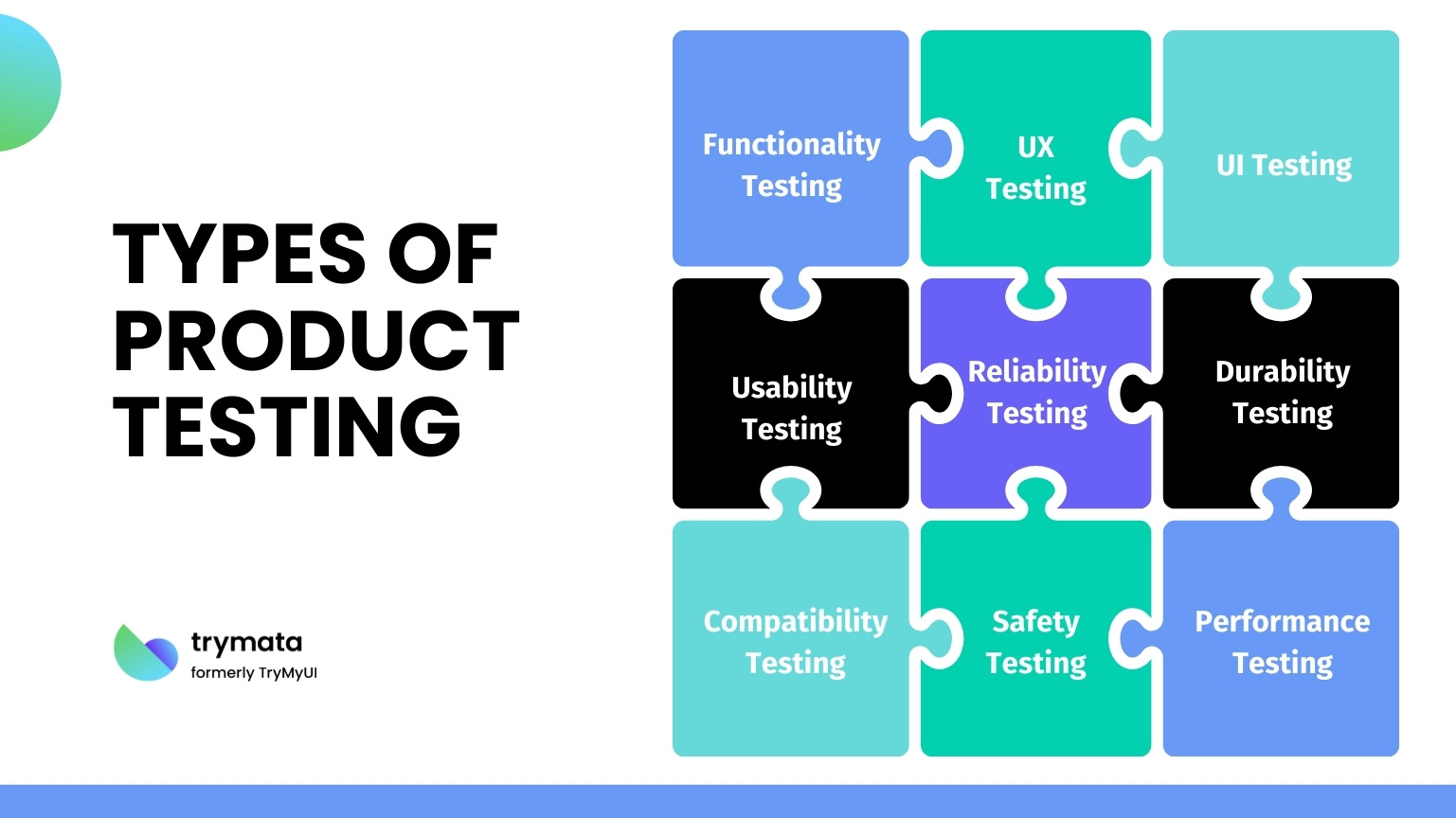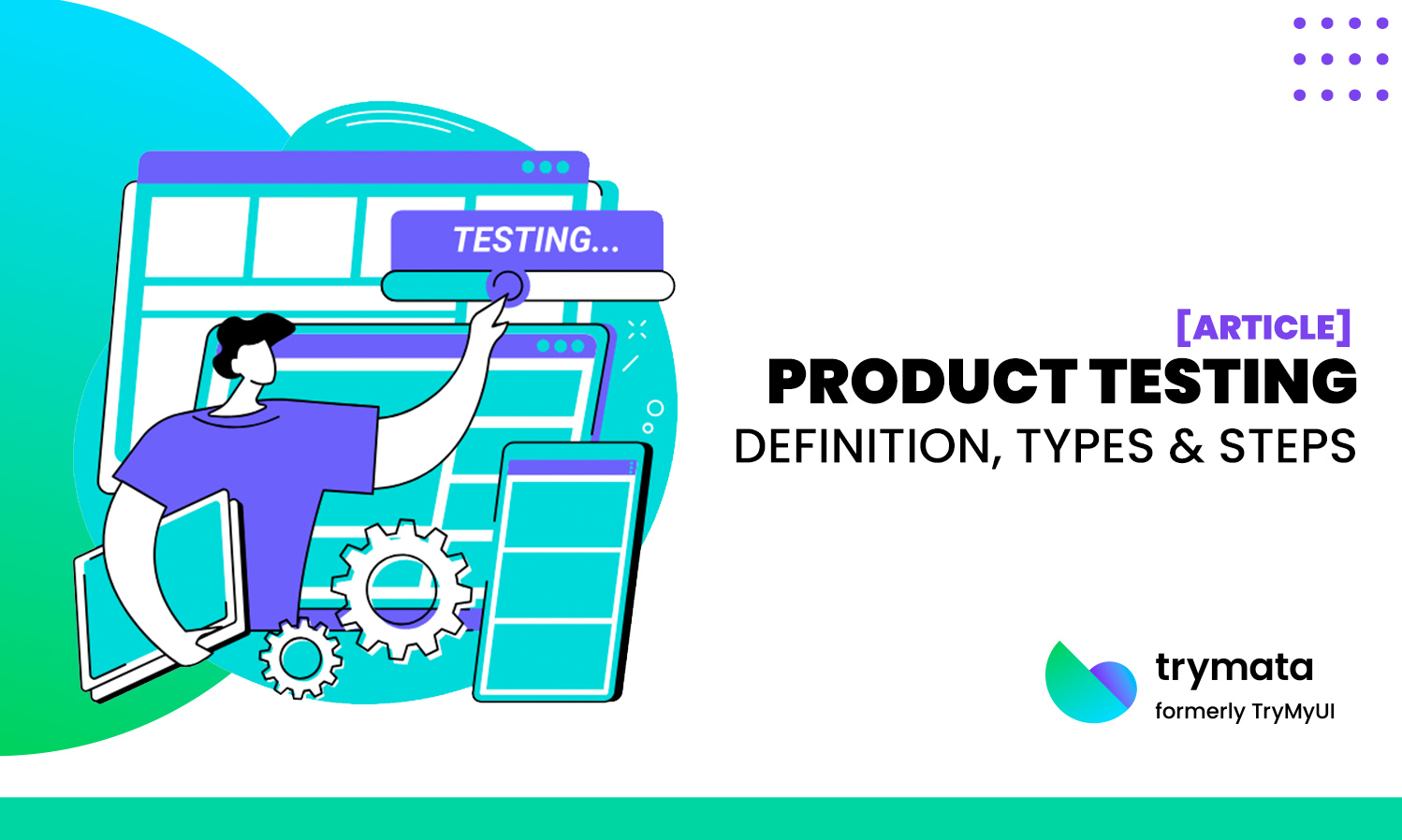What is Product Testing?
Product testing is defined as the process of examination and assessment of a product to ensure it meets predetermined criteria for quality, safety, reliability, and performance before it reaches the market.
This is an essential phase in the product development lifecycle that aims to identify and rectify any flaws, defects, or shortcomings that could compromise the product’s functionality or user experience. Through systematic testing protocols and methodologies, manufacturers can verify that their products adhere to regulatory standards, industry best practices, and consumer expectations.
The process of product testing encompasses a diverse range of evaluations tailored to the specific attributes and functionalities of the product under scrutiny. These evaluations may include but are not limited to functionality testing, which assesses the product’s core features and performance capabilities, durability testing to gauge its resilience under varying conditions, safety testing to mitigate potential hazards or risks, and usability testing to optimize user experience and interface design. Each test serves a distinct purpose in ensuring the overall quality and reliability of the product.
By subjecting products to comprehensive testing regimes, manufacturers can mitigate risks, enhance customer satisfaction, and safeguard their brand reputation. The insights gained from product testing inform decision-making processes related to design refinements, manufacturing processes, quality control measures, and regulatory compliance.
Robust product testing practices are instrumental in delivering products that meet or exceed consumer expectations, fostering trust and loyalty in the brand.
Key Components of Product Testing
The key components of product testing encompass a range of crucial elements essential for ensuring the quality, safety, and performance of a product. These components typically include:
- Testing Objectives: Clear identification of the specific goals and objectives of the testing process is fundamental. This involves defining what aspects of the product will be evaluated, such as functionality, durability, safety, or usability, and establishing criteria for success.
- Testing Methods and Protocols: Selection of appropriate testing methods and protocols tailored to the nature of the product and its intended use is critical. This may involve various techniques such as performance testing, stress testing, environmental testing, and regulatory compliance testing.
- Test Environment: Creating a controlled and representative test environment is essential for obtaining accurate and reliable results. Factors such as temperature, humidity, pressure, and other environmental conditions must be considered depending on the product’s requirements.
- Testing Equipment and Tools: Utilization of specialized equipment and tools specific to each testing procedure is necessary. This may include instruments for measuring performance metrics, simulating real-world conditions, or conducting safety evaluations.
- Test Samples and Prototypes: Adequate provision of test samples or prototypes is required to conduct thorough evaluations across different stages of product development. These samples should be representative of the final product and sufficient in quantity to support comprehensive testing.
- Data Collection and Analysis: Systematic collection and analysis of test data are essential for identifying patterns, trends, and potential issues. This involves recording relevant parameters, observations, and measurements accurately and employing statistical methods to interpret the results effectively.
- Feedback and Iteration: Incorporating feedback from testing outcomes into the product development process enables iterative improvements. Manufacturers must be responsive to identified issues, implement necessary changes, and repeat testing cycles as needed to achieve desired outcomes.
- Regulatory Compliance: Ensuring adherence to relevant regulatory standards and industry regulations is paramount. Product testing must address applicable legal requirements and certification processes to guarantee compliance with safety, quality, and performance standards.
Types of Product Testing
Product testing encompasses various types of evaluations designed to assess different aspects of a product’s quality, performance, safety, and usability. Some of the common types of product testing include:

- Functionality Testing: This type of testing ensures that the product performs its intended functions as expected. It focuses on verifying that all features and capabilities work correctly according to the specifications. For example, testing a smartphone to ensure that all apps launch properly, calls can be made and received, and the camera takes photos without issues.
- User Experience Testing: User experience testing evaluates the overall experience of users interacting with the product, focusing on satisfaction, ease of use, and emotional responses. It aims to understand how users perceive and interact with the product across different touchpoints and scenarios. For example, conducting usability testing on a mobile banking app to assess how easily users can navigate through various features, complete transactions, and accomplish their goals.
- User Interface Testing: User interface testing specifically assesses the design and functionality of the product’s interface elements, such as buttons, menus, forms, and navigation components. It ensures that the interface is visually appealing, intuitive, and consistent across different devices and screen sizes. For instance, testing a web application to verify that buttons are clickable, form fields accept input correctly, and menus expand and collapse as expected across different browsers and resolutions.
- Usability Testing: Usability testing evaluates how user-friendly and intuitive the product is for its intended users. It assesses aspects such as navigation, layout, ease of use, and overall user experience. An example would be testing a website by observing users as they attempt to complete common tasks like making a purchase or finding information.
- Reliability Testing: This testing measures the product’s ability to perform consistently and reliably under normal operating conditions over a specified period. It involves subjecting the product to prolonged use or stress to identify any potential failures or malfunctions. For instance, testing a printer by continuously printing large volumes of documents to ensure it operates without issues for extended periods.
- Durability Testing: Durability testing assesses the product’s resistance to wear, tear, and damage over time or under specific environmental conditions. It involves subjecting the product to various stressors, such as impact, vibration, temperature, or humidity, to simulate real-world usage scenarios. An example would be drop testing a smartphone to determine its resilience to accidental drops and impacts.
- Compatibility Testing: Compatibility testing examines how well the product interacts with different hardware, software, operating systems, browsers, or other external components. It ensures that the product functions correctly across various platforms and configurations. For instance, testing a software application to ensure it works seamlessly on different operating systems like Windows, macOS, and Linux.
- Safety Testing: Safety testing assesses the product’s compliance with regulatory standards and its potential to cause harm or injury to users. It involves identifying and mitigating any potential hazards or risks associated with the product’s design, materials, or usage. An example would be testing a children’s toy to ensure it meets safety standards for choking hazards, sharp edges, and chemical substances.
- Performance Testing: Performance testing evaluates the product’s speed, responsiveness, scalability, and stability under different workload conditions. It helps identify performance bottlenecks, optimize resource utilization, and ensure the product meets performance requirements. For example, load testing a website to assess its performance under heavy traffic loads and concurrent user interactions.
Importance of Product Testing for Enterprises
Product testing holds significant importance for enterprises across various industries due to several compelling reasons:
- Quality Assurance: Product testing ensures that the final product meets stringent quality standards and specifications. By identifying and rectifying defects or issues early in the development process, enterprises can deliver high-quality products that satisfy customer expectations, thereby enhancing brand reputation and customer loyalty.
- Risk Mitigation: Through comprehensive testing, enterprises can mitigate the risks associated with product failures, recalls, or safety hazards. By addressing potential issues proactively, they can minimize financial losses, legal liabilities, and damage to their reputation, thereby safeguarding their business interests.
- Regulatory Compliance: Product testing is essential for ensuring compliance with industry regulations, safety standards, and legal requirements. Enterprises must adhere to regulatory frameworks and obtain necessary certifications to demonstrate product safety and compliance, thereby avoiding penalties, fines, or legal sanctions.
- Customer Satisfaction: By conducting thorough testing to validate product functionality, reliability, and usability, enterprises can enhance the overall customer experience. Satisfied customers are more likely to recommend the product to others, leading to increased sales, market share, and long-term profitability.
- Innovation and Differentiation: Product testing provides valuable feedback that can drive innovation and differentiation in the marketplace. By understanding customer needs and preferences through testing, enterprises can refine existing products or develop new solutions that offer unique features, superior performance, or enhanced usability, thereby gaining a competitive edge.
- Cost Savings: While investing in product testing may incur upfront costs, it ultimately leads to long-term cost savings for enterprises. By detecting and addressing defects early in the development cycle, enterprises can avoid costly rework, product recalls, or warranty claims. Moreover, delivering high-quality products reduces the likelihood of customer complaints and returns, thereby minimizing associated expenses.
- Continuous Improvement: Product testing fosters a culture of continuous improvement within enterprises, driving ongoing enhancements to products and processes. By collecting and analyzing feedback from testing outcomes, enterprises can identify areas for optimization, innovation, and efficiency gains, thereby maintaining a competitive advantage in the market.
Overall, product testing is indispensable for enterprises seeking to deliver superior products that meet customer needs, comply with regulations, and maintain a competitive edge in today’s dynamic business landscape.
Product Testing Process: 8 Key Steps
The product testing process typically involves several key steps to ensure thorough evaluation and validation of the product’s quality, performance, and safety. Here are the essential steps:
- Identify Testing Objectives: Clearly define the goals and objectives of the testing process, including the specific attributes or functionalities of the product to be evaluated. This step helps establish a clear roadmap for testing activities and ensures alignment with project requirements and stakeholder expectations.
- Develop Test Plan: Create a comprehensive test plan outlining the testing approach, methodologies, resources, and timelines. The test plan should specify the types of tests to be conducted, testing environments, test scenarios, and acceptance criteria. It serves as a roadmap for executing the testing process efficiently and effectively.
- Prepare Test Environment: Set up the testing environment to replicate real-world conditions and scenarios as closely as possible. This may involve configuring hardware, software, network infrastructure, and other relevant components necessary for conducting tests. Ensuring the availability of test data, test tools, and testing environments is crucial for accurate and reliable testing outcomes.
- Create Test Cases: Develop detailed test cases or test scripts that outline the steps to be executed during each testing scenario. Test cases should cover various aspects of the product, including functionality, performance, usability, compatibility, and security. Each test case should specify the expected outcomes and acceptance criteria for evaluating test results.
- Execute Tests: Execute the test cases according to the test plan, following predefined procedures and guidelines. This involves systematically running test scenarios, inputting test data, and observing the product’s behavior to identify any deviations from expected results. Test execution may involve manual testing, automated testing, or a combination of both, depending on the nature of the product and testing requirements.
- Record and Analyze Results: Record test results, observations, and any defects or issues identified during testing. Documenting test outcomes allows for traceability and enables stakeholders to track the status of testing activities. Prioritize and categorize defects based on severity and impact on product quality.
- Report Findings: Prepare comprehensive test reports summarizing the testing process, results, findings, and recommendations. Clearly communicate the status of testing activities, including any defects or issues discovered, to relevant stakeholders. Test reports serve as a basis for decision-making and provide insights into the product’s readiness for release or further refinement.
- Iterate and Retest: Based on the findings from test reports, iterate on the product design, implementation, or testing approach as needed. Address identified defects, incorporate feedback, and make necessary adjustments to improve product quality and performance. Repeating testing cycles ensures that any issues are effectively resolved before the product is released to production.




